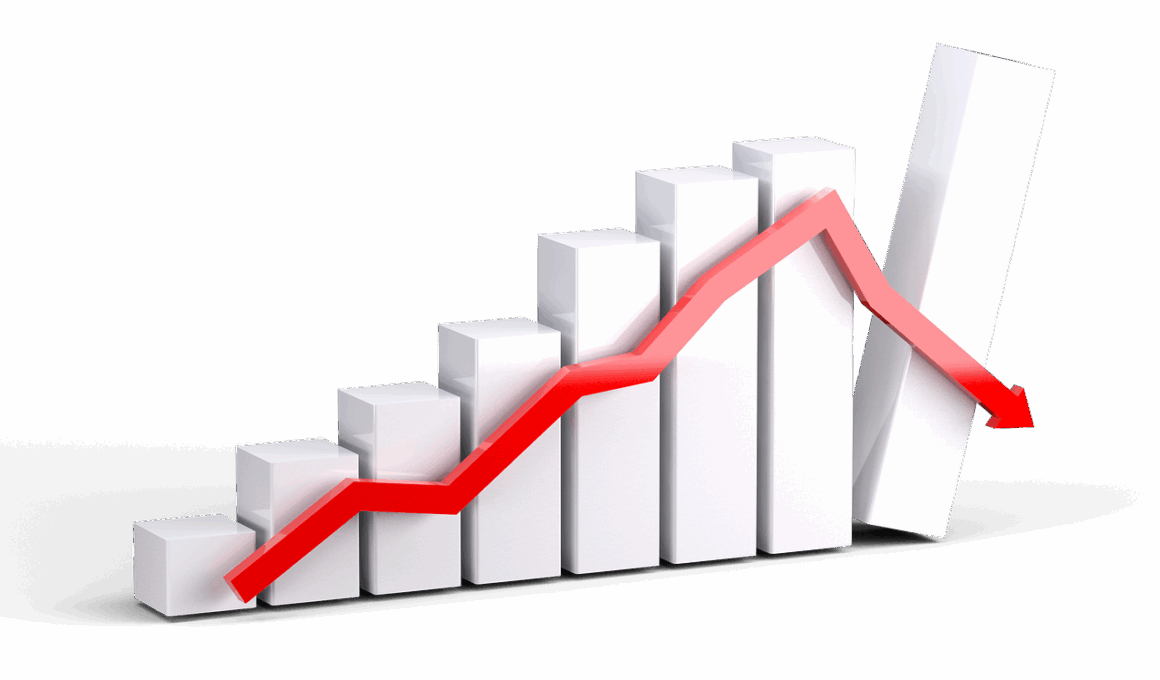Social Media Sentiment vs. Traditional Market Sentiment Indicators
In today’s fast-paced financial landscape, understanding market sentiment is crucial for investors and analysts. Investors have relied on traditional market sentiment indicators for decades, which include metrics like the VIX, put/call ratios, and surveys such as the AAII Sentiment Survey. These indicators provide insights into investor behavior and potential market movements based on historical data. However, with the advent of social media, a new layer of sentiment analysis has emerged. Platforms like Twitter and Reddit have become vital sources of real-time sentiment that can influence market trends, especially during volatile times. Analyzing social media sentiment allows investors to gauge public opinion and sentiment more dynamically. Data gathered from online discussions can offer a fresh perspective on market sentiment, often revealing investor emotions that conventional indicators may overlook. Furthermore, social media sentiment can complement traditional indicators by offering additional context. The rapid dissemination of information and opinions on social media poses both opportunities and challenges, transforming the landscape of market analysis for a new generation of traders and investors.
Combining social media sentiment with traditional market sentiment indicators can enhance overall market analysis, offering a more comprehensive view of investor attitudes. While traditional indicators are grounded in concrete financial data, social media sentiment often reflects the immediate reactions and emotions of individual investors. This distinction is vital, as the inclusion of social sentiment can lead to more accurate forecasts of market movements. Moreover, sentiment on social platforms can create a feedback loop; a trending negative sentiment may trigger reactions that traditional indicators may not capture. The integration of these two methodologies can lead to richer insights, allowing analysts to make informed decisions. For instance, during a period of market volatility, the sudden rise of negative sentiment on social media often correlates with price declines in stocks. Contrarily, positive sentiment can fuel stock rallies, driven not merely by fundamentals but by the collective emotions of online communities. Investing strategies that consider both traditional and social sentiment can provide a competitive edge. Leveraging technology to analyze vast amounts of data enhances this process, paving the way for sophisticated trading algorithms and strategies.
The Importance of Real-Time Sentiment Analysis
Real-time analysis of market sentiment is now more vital than ever, particularly given how quickly information spreads through social media channels. Traditional sentiment indicators typically rely on historical data, which might not represent current market sentiment accurately. In contrast, social media platforms offer immediacy, enabling traders to respond rapidly to changes in market perception. Following trends on platforms such as Twitter can yield insights into what investors are currently feeling or discussing. Algorithms can analyze posts, tweets, and comments to gauge public sentiment regarding economic events, earnings reports, or political changes that may impact financial markets. Furthermore, the viral nature of social media can amplify certain sentiments, influencing the collective behavior of investors. As traders incorporate this immediate feedback into their strategies, the importance of monitoring social media sentiment continues to grow. The interplay between real-time social media sentiment and traditional indicators can create unique trading opportunities. By acting on an informed basis, traders can capitalize on movements before traditional indicators suggest changes, thereby gaining an advantage in market timing.
While integrating social media sentiment into market analysis offers numerous benefits, it also comes with its own set of challenges. One primary concern is the quality of the data obtained from social media channels. Unlike traditional indicators, which are often rigorously compiled and standardized, social media content can be noisy and inconsistent. The vast volumes of posts and interactions present difficulties in sifting through irrelevant data to find meaningful insights. Additionally, social media sentiment can be manipulated; coordinated efforts, such as so-called ‘pump and dump’ schemes, can distort public opinion and skew sentiment analysis results. Therefore, it is essential for analysts to validate and cross-reference social media sentiment with traditional indicators. Combining these two data sets effectively can illuminate the context behind shifts in sentiment. Furthermore, diversifying the sources of data collection can improve accuracy. By monitoring various social media platforms, analysts can better filter through noise and misinformation, focusing on genuine sentiment. Ultimately, while pitfalls exist, the merging of social media insights with traditional metrics can result in a more nuanced understanding of market dynamics.
Case Studies and Real-world Applications
Several case studies illustrate the effective integration of social media sentiment with traditional market indicators. For instance, the GameStop trading frenzy highlighted the influence of social media-driven sentiment on stock prices. Platforms like Reddit enabled retail investors to rally around the stock, defying traditional valuation metrics. Social sentiment combined with the traditional measure of short interest created a perfect storm for stock volatility, with social media discussions amplifying sentiment in ways that few could have predicted. This event showcased how traditional models could not fully explain the dramatic price movements experienced that month. Similarly, during the COVID-19 pandemic, social media sentiment served as a leading indicator for market recovery ahead of traditional economic data releases. Improved tools for sentiment analysis allowed investment firms to adjust their strategies in response to emerging online discussions. Analyzing social media chatter regarding vaccine developments and government response plans provided insights into future economic conditions. Testimonies from analysts reflect that using real-time social sentiment data can arm investors with the necessary tools to preemptively act on market trends that conventional indicators might miss.
Despite the advantages of integrating social media sentiment with traditional indicators, it is crucial for investors to remain cautious. Market sentiment, both traditional and social, often fluctuates based on transient emotions rather than long-term fundamentals. Investors should recognize the transient nature of sentiment and incorporate it into a broader strategy that emphasizes long-term investment goals. Moreover, while social media insights can provide additional perspective, they should not replace due diligence or technical and fundamental analysis. Incorporating a balance between immediate sentiment and fundamental research can yield the best results. This holistic approach can help investors avoid potential pitfalls, such as overreacting to fleeting trends or misinformation that may circulate on social platforms. It’s also essential to remain critical of sentiment data collection methods, ensuring the reliability of the sources. By capturing various perspectives and integrating multiple analytical frameworks, investors can make more balanced decisions. Ultimately, being informed on sentiment analysis while retaining a focus on long-term investment strategies may position investors favorable for sustainable success.
The Future of Market Sentiment Analysis
As technology continues to evolve, the future of market sentiment analysis looks promising, particularly as machine learning and AI develop further. The potential for enhanced algorithms that can accurately parse social media for sentiment, providing insights in real-time, can change the landscape of investing strategies. As more traders recognize the value of social media sentiment, the essential task will be building comprehensive frameworks that incorporate both traditional and digital indicators seamlessly. Innovations in sentiment analysis tools are likely to emerge, allowing traders and analysts to leverage combined data effectively. As a consequence, we may witness the establishment of new metrics that can assess market sentiment more holistically. Collaboration between financial institutions and tech companies could yield breakthrough platforms that democratize access to sentiment analysis for all investors, from retail traders to institutional giants. However, as this occurs, the need for educating investors on responsibly interpreting data becomes imperative. Financial literacy will play a crucial role as more people enter the market with access to advanced tools. By embracing the synergy of traditional and social sentiment analysis, the financial landscape may shift towards a more responsive, informed, and dynamic trading environment.
The intricate relationships among various market sentiment indicators will undoubtedly become more pronounced in the coming years. As traders continuously seek an advantage, balancing traditional financial analysis with the influence of social media will become a necessity rather than an option. Integrating both can lead to more accurate forecasting models and deeper insights into investor psychology, enabling traders to not only anticipate market movements but also understand the motivations behind them. The future of market analysis may involve a more collaborative approach among finance experts, data scientists, and behavioral analysts working in tandem. This collaborative contrast could lead to a richer variety of methods and solutions for understanding market sentiment. As the financial landscape evolves, adaptability, constant learning, and strategic integration of diverse data will be crucial. Inevitably, as algorithms become more sophisticated, the need for human oversight and critical thinking will still remain paramount. Investors need to harness the power of technology while also employing due diligence and sound judgement. Embracing this dual approach will position investors advantageously for market changes in this dynamic world of finance.


